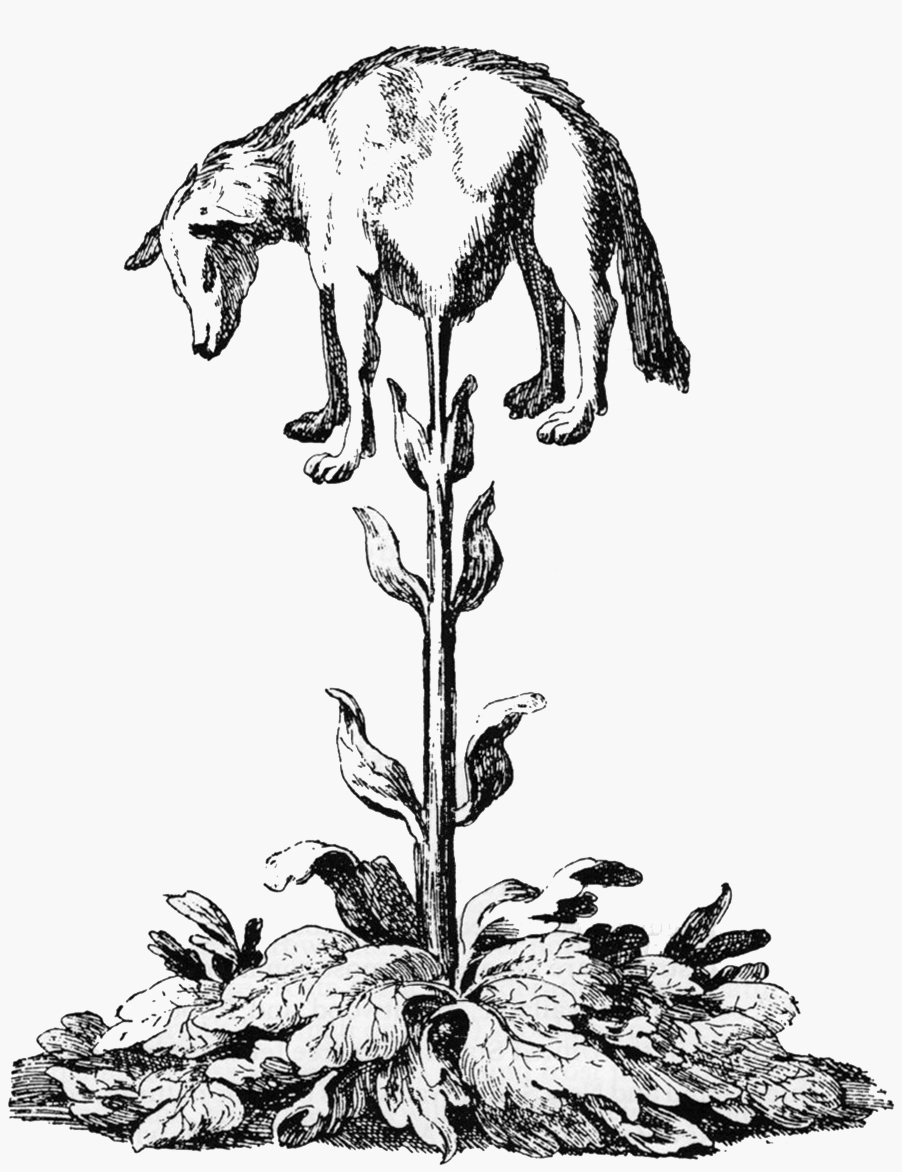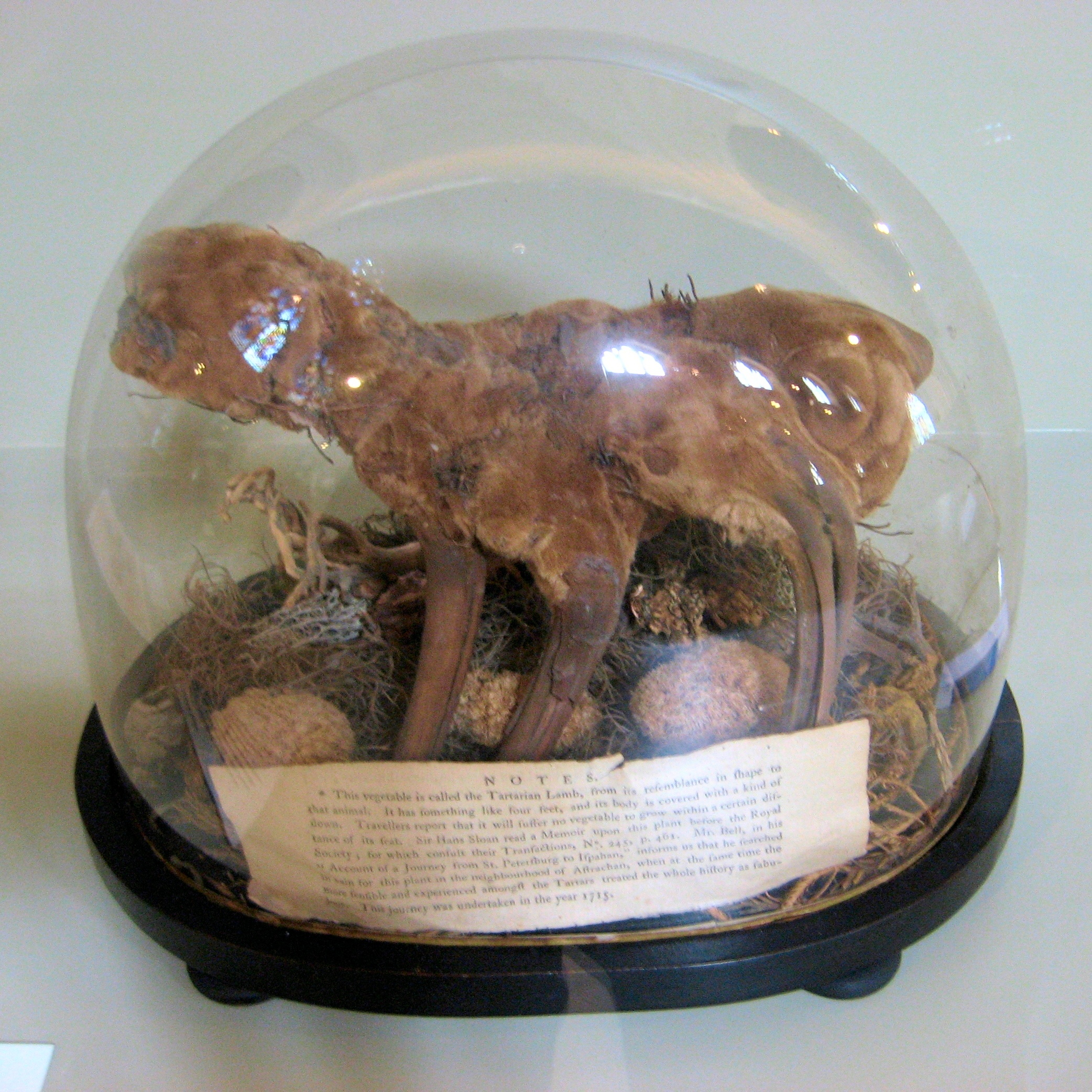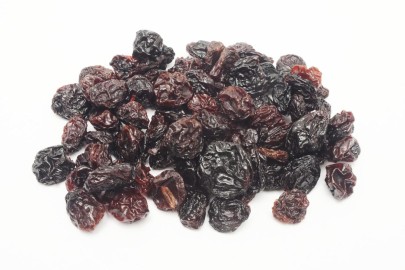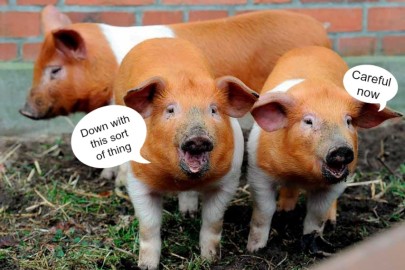This week’s weird wikipedia article is a rather wooly tale. Mmmm…vegetable lamb; the world’s first ready meal?
The Vegetable Lamb of Tartary is a legendary zoophyte of Central Asian origin, and was believed to be a plant that could grow sheep as its fruit. The sheep were connected to the plant by an umbilical cord and grazed the land around the plant. When all the plants were gone, both the plant and sheep died.
In his book, The Vegetable Lamb of Tartary (1887), Henry Lee describes the lamb as believed to be both a true animal and a living plant. However, he states that some writers believed the lamb to be the fruit of a plant, sprouting forward from melon-like seeds. Others, however, believed the lamb to be a living member of the plant that, once separated from it, would perish. The vegetable lamb was believed to have blood, bones, and flesh like that of a normal lamb. It was connected to the earth by a stem, similar to an umbilical cord, that propped the lamb up above ground. The cord could flex downward, allowing the lamb to feed on the grass and plants surrounding it. Once the plants within reach were eaten, the lamb died. It could be eaten, once dead, and its blood supposedly tasted sweet like honey. Its wool was said to be used by the native people of its homeland to make head coverings and other articles of clothing. The only carnivorous animals attracted to the lamb-plant (other than humans) were wolves.
Dr. Erasmus Darwin mentions the Borametz in his 1781 work, The Botanic Garden:
E’en round the Pole the flames of love aspire, And icy bosoms feel the secret fire, Cradled in snow, and fanned by Arctic air, Shines, gentle borametz, thy golden hair Rooted in earth, each cloven foot descends, And round and round her flexile neck she bends, Crops the grey coral moss, and hoary thyme, Or laps with rosy tongue the melting rime; Eyes with mute tenderness her distant dam, And seems to bleat – a vegetable lamb.
Although it owed its currency in medieval thought as a way of explaining the existence of cotton, underlying the myth is a real plant, Cibotium barometz, a fern. It was known under various names including Scythian Lamb and Borometz, the local word for lamb. The “lamb” is produced by removing the leaves from a short length of the fern’s woolly rhizome. When the rhizome is inverted, it fancifully resembles a woolly lamb with the legs being formed by the severed petiole bases.













I have seen reproductions of medieval prints showing the lamb, which I understood to be a garbled explanation of cotton. But who can forget Marvell’s lines, “Our vegetable lamb would grow/Softer than naugas, and more slow.”?
What an intriguing illusion. There is a, I think, a good illustration of the actual plant in the Swedish wikipedia (borometz=Tatariskt växtlamm). Looks like an upside down lamb.
https://upload.wikimedia.org/wikipedia/commons/a/a6/Vegetable_lamb_%28from_Svenska_Familj-Journalen%2C_1879%29.png